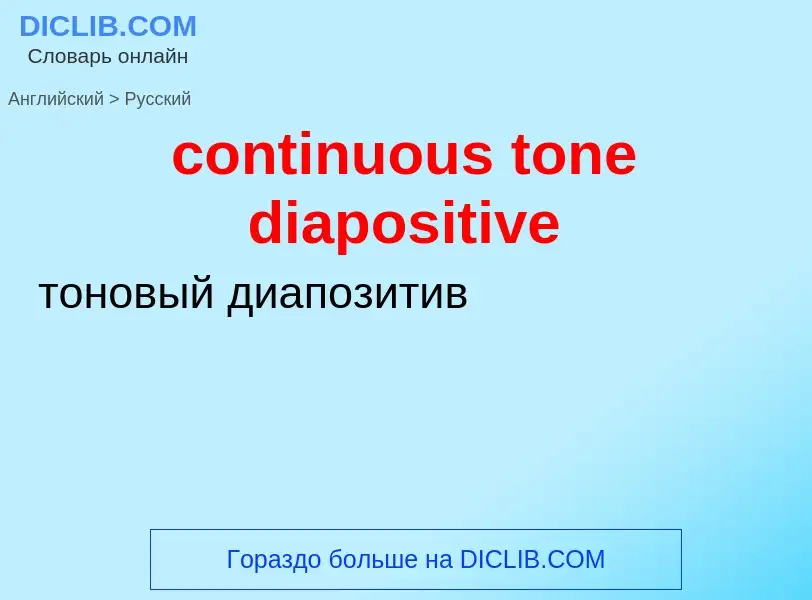Перевод и анализ слов искусственным интеллектом ChatGPT
На этой странице Вы можете получить подробный анализ слова или словосочетания, произведенный с помощью лучшей на сегодняшний день технологии искусственного интеллекта:
- как употребляется слово
- частота употребления
- используется оно чаще в устной или письменной речи
- варианты перевода слова
- примеры употребления (несколько фраз с переводом)
- этимология
continuous tone diapositive - перевод на русский
['təuni:m]
существительное
лингвистика
тонема (смыслоразличительное ударение, смыслоразличительный элемент интонации и т. п.)
[təu'netiks]
существительное
лингвистика
тонетика (раздел лингвистики, изучающий тоны)
[təu'netik]
прилагательное
фонетика
тонический
тоновый
математика
непрерывное расширение
общая лексика
разрывная функция
математика
прерывная функция
Википедия
In telecommunications, Continuous Tone-Coded Squelch System or CTCSS is one type of in-band signaling that is used to reduce the annoyance of listening to other users on a shared two-way radio communication channel. It is sometimes referred to as tone squelch. It does this by adding a low frequency audio tone to the voice. Where more than one group of users is on the same radio frequency (called co-channel users), CTCSS circuitry mutes those users who are using a different CTCSS tone or no CTCSS. It is sometimes referred to as a sub-channel, but this is a misnomer because no additional channels are created. All users with different CTCSS tones on the same channel are still transmitting on the identical radio frequency, and their transmissions interfere with each other; however; the interference is masked under most conditions. The CTCSS feature also does not offer any security.
A receiver with just a carrier or noise squelch does not suppress any sufficiently strong signal; in CTCSS mode it unmutes only when the signal also carries the correct sub-audible audio tone. The tones are not actually below the range of human hearing, but are poorly reproduced by most communications-grade speakers and in any event are usually filtered out before being sent to the speaker or headphone.





